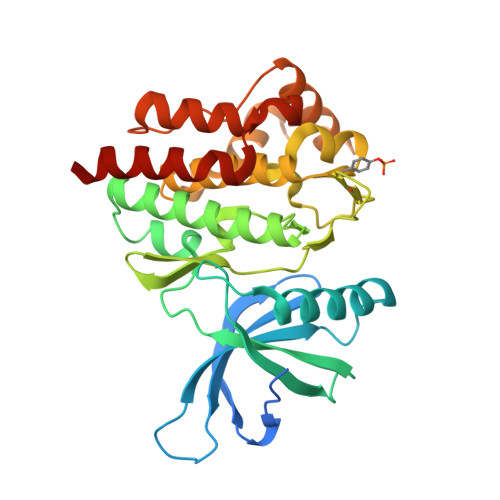Kinase domain inhibition of leucine rich repeat kinase 2 (LRRK2) using a [1,2,4]triazolo[4,3-b]pyridazine scaffold.
Galatsis, P., Henderson, J.L., Kormos, B.L., Han, S., Kurumbail, R.G., Wager, T.T., Verhoest, P.R., Noell, G.S., Chen, Y., Needle, E., Berger, Z., Steyn, S.J., Houle, C., Hirst, W.D.(2014) Bioorg Med Chem Lett 24: 4132-4140
- PubMed: 25113930
- DOI: https://doi.org/10.1016/j.bmcl.2014.07.052
- Primary Citation of Related Structures:
4PY1 - PubMed Abstract:
Leucine rich repeat kinase 2 (LRRK2) has been genetically linked to Parkinson's disease (PD). The most common mutant, G2019S, increases kinase activity, thus LRRK2 kinase inhibitors are potentially useful in the treatment of PD. We herein disclose the structure, potential ligand-protein binding interactions, and pharmacological profiling of potent and highly selective kinase inhibitors based on a triazolopyridazine chemical scaffold.
Organizational Affiliation:
Worldwide Medicinal Chemistry, Pfizer Worldwide R&D, 610 Main St., Cambridge, MA 02139, United States. Electronic address: paul.galatsis@pfizer.com.
















